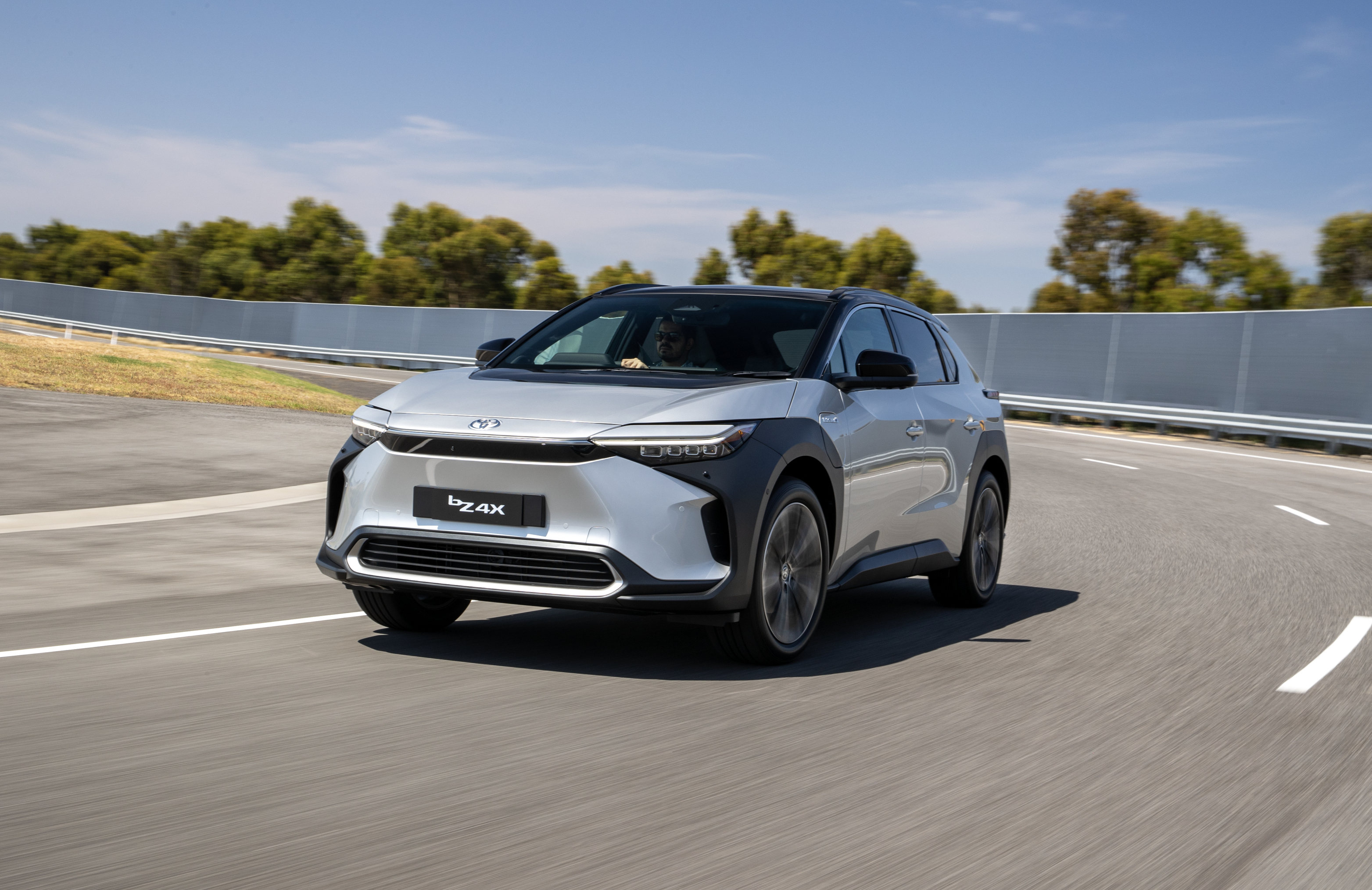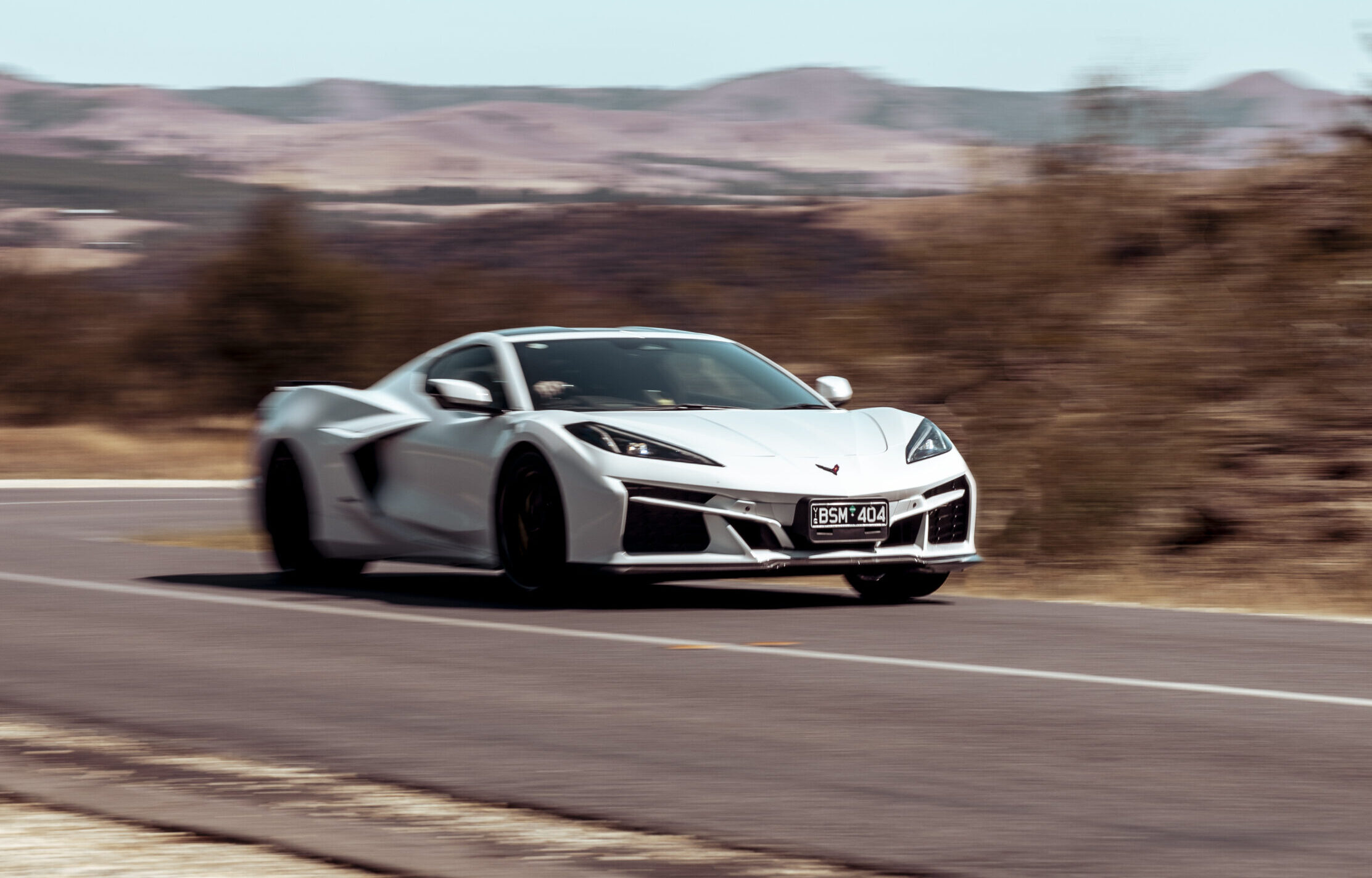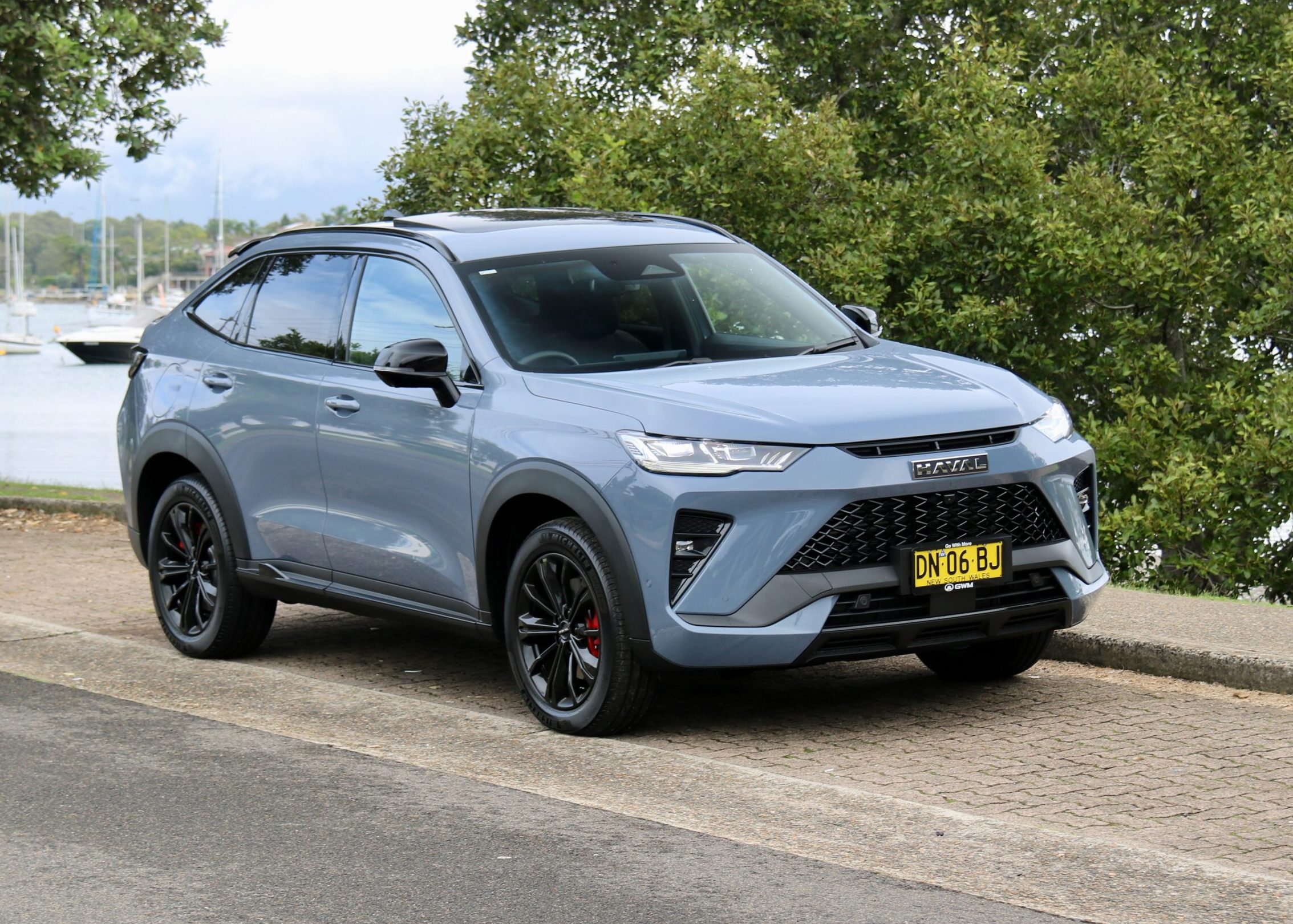Things we like
- Rapid, smooth acceleration (yep, it’s an EV)
- Excellent ride comfort, although driven only on a generously smooth road
- Near-premium interior feels a leap forward for the Toyota brand, but they did cut at least one corner…
- Excellent interior space and a decent boot with a flat loading lip
Not so much
- Price unknown, but Toyota admits it won’t be cheap
- ‘Fast’ DC charging speed limited to 150kW, well short of likely price rivals the Kia EV6 and Hyundai Ioniq 5 (350kW)
- Big centre screen’s wow factor spoiled a little by tiny driver display
- Spacious front row comes partly at the expense of a glovebox
It’s here, almost. Unveiled in the distant past of late 2021, the Toyota BZ4x electric SUV is now in Australia – but it’ll be sometime in late 2023 before you’ll be able to order one, roughly a year later than initially expected.
To its credit, Toyota Australia says it delayed the local launch of the BZ4x to ensure a relatively small but steady supply – whereas other brands have brought their EVs into the country in small allocations, angering buyers not quick enough to get an order in.
It’s also expected that by the time the BZ4x arrives in its Australian specification, it will have had a model-year update, which could include new features and improvements under the skin. Maybe even a glovebox?
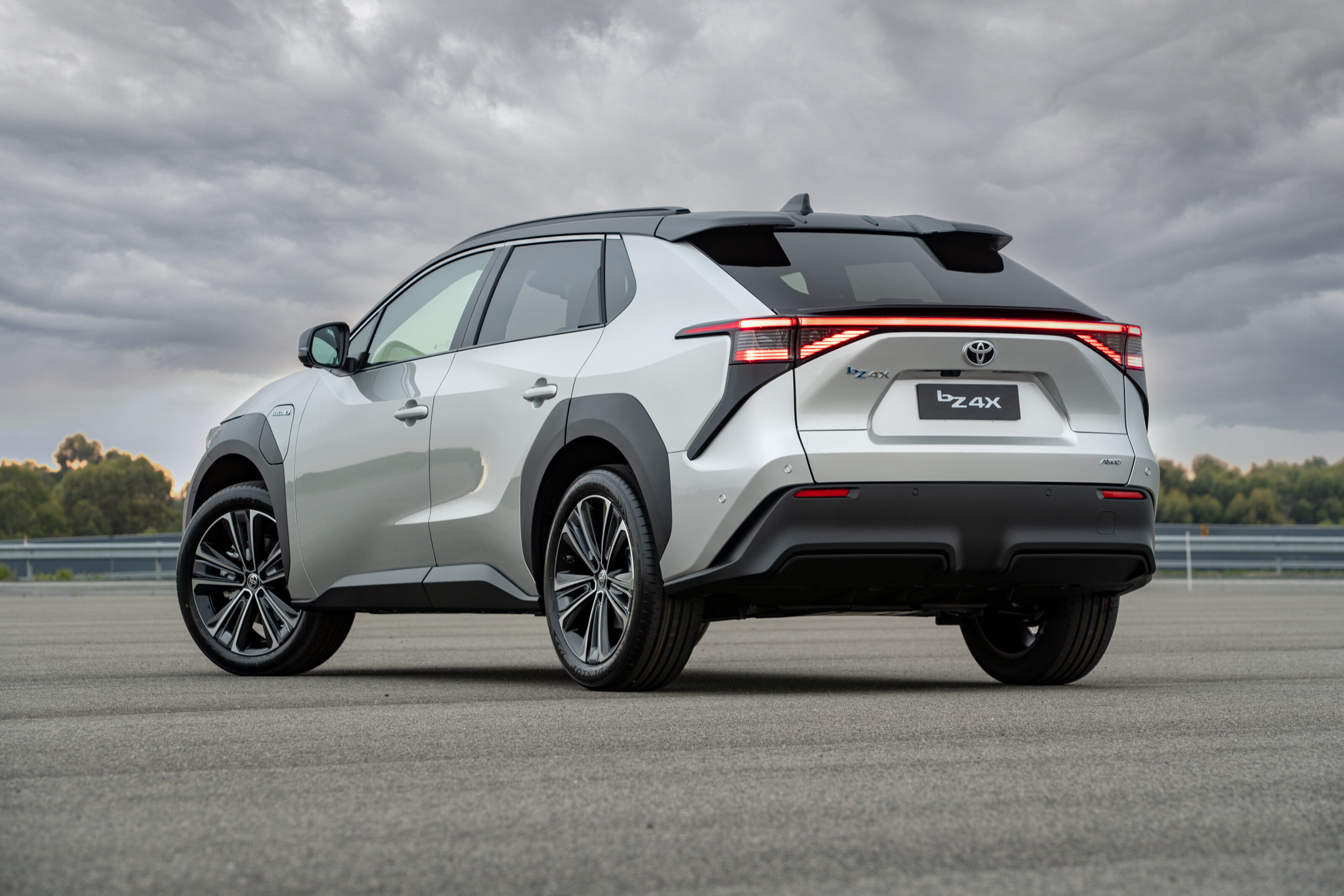
To give Australian buyers a taste of what’s to come, Toyota shipped a right-hand-drive BZ4x in from the UK for media to sample. The vehicle is a production car, not a prototype, but the brand’s local team were at pains to explain that its unspecified specification should not be considered a clue as to the equipment levels and trims we’ll see here.
Still, it must be fairly representative of what Australian buyers can expect, for Toyota to bother with bringing it in for our assessment.
Whether it will prove compelling when weighed against rivals like the Hyundai Ioniq 5 and our 2022 Car of the Year, Kia’s EV6, remains to be seen. This first drive, though, suggests BZ4x buyers will be fairly satisfied – when eventually they can get one.

JUMP AHEAD
- How much is it, and what do you get?
- How do rivals compare on value?
- Interior comfort, space and storage
- What is it like to drive?
- How safe is it?
- VERDICT
How much is it, and what do you get?
We don’t know, and… we don’t know.
The Australian-market BZ4x is still almost a year away from its Australian launch, and some sort of update to the car is expected to appear in that time.
What we know well enough is that the Toyota BZ4x won’t be cheap in Australia, with Toyota Australia’s Sean Hanley confirming as much in conversation at the event.
He wouldn’t be moved to offer even a ballpark, but we expect the BZ4x to be quite expensive – just as most offerings in its segment are. Look for a figure above $60,000 at the lowest, but anticipate a number starting around $70,000.
The BZ4x presented to the press at Toyota’s Australian headquarters in Melbourne was a dual-motor example, giving it the benefit of all-wheel drive and more traction than its regular front-wheel drive sibling. For the AWD car, a price somewhere closer to $80,000 might not be out of the question for Toyota.
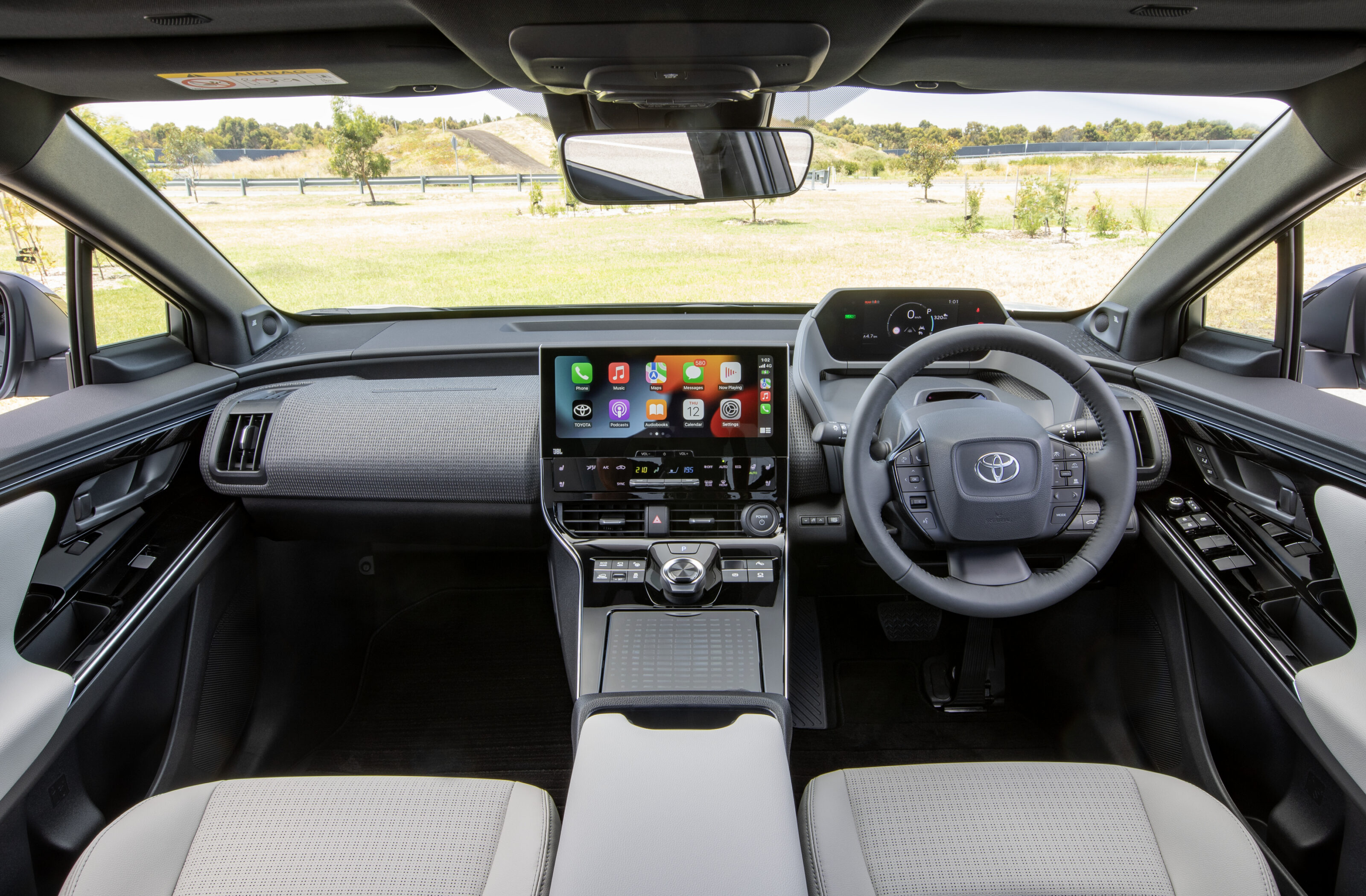
At a glance
Note: It’s important to remember that the details below are per the BZ4x’s 2021 debut. The Australia car, possibly updated for the 2024 model year, may bring improvements. Time will tell.
Motors and drive
Right now, there are two configurations: a 150kW single-motor front-wheel-drive car, and an all-wheel-drive model with two motors producing 60kW each. Torque in the AWD model, tested here, is listed at 337Nm.
Battery
Both versions have a 71.4kWh battery system, which is fairly ‘on par’ for size for its segment.
Charging
At a DC ‘fast charger’, the BZ4x will accommodate up to 150kW charging – compared to about 230kW for the EV6 and its 77kWh battery.
It’s not a much poorer result, though: Toyota promises a 0-80 per-cent charge should be achieved in 30 minutes, while the EV6 is claimed to get there in 18 minutes. (In all cases, these times will vary depending on what charge level you start from, thanks to every EV’s battery protection system.)
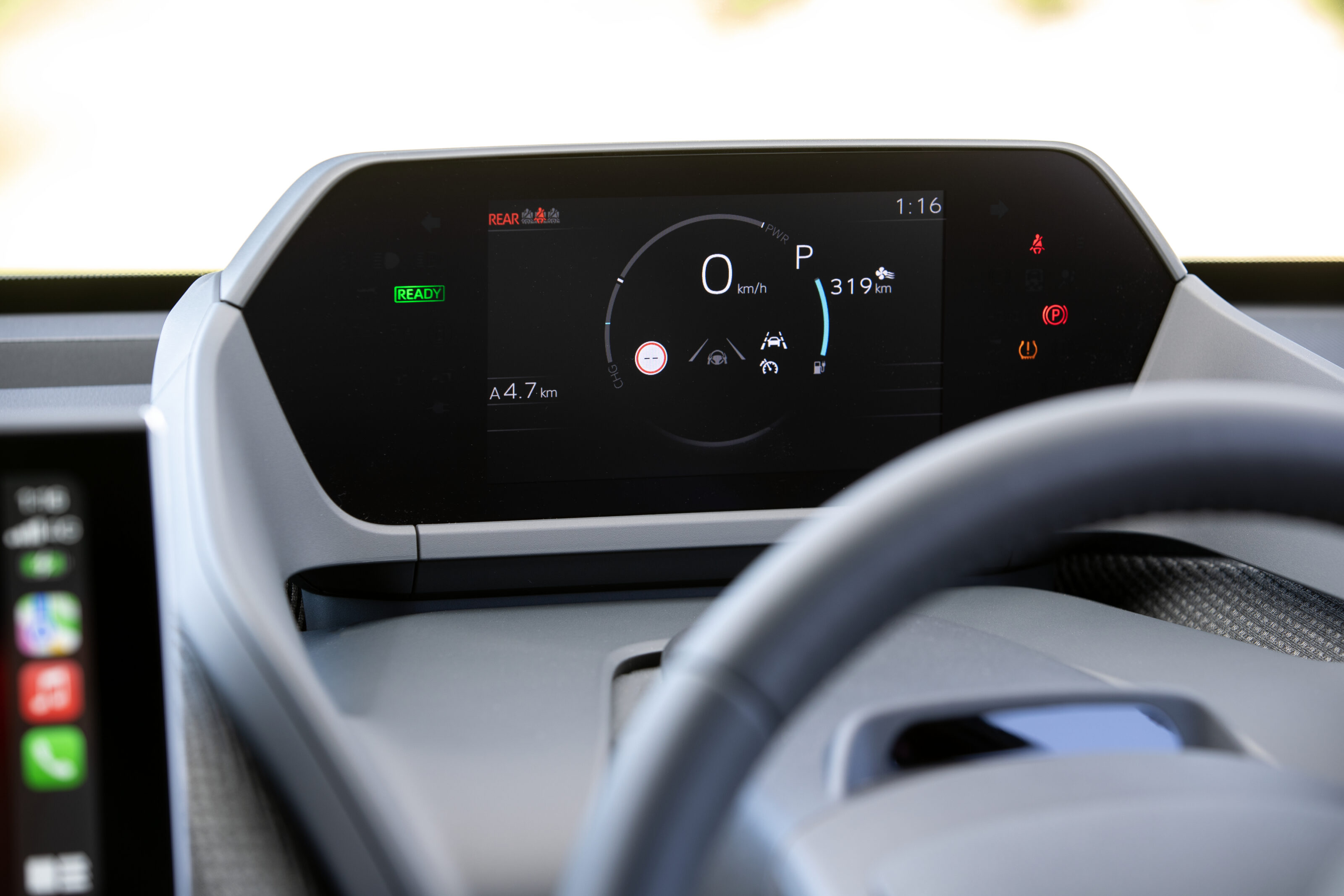
Energy efficiency
Toyota claims a power consumption rate of 14.3kWh/100km (think of how regular fuel consumption is measured in L/100km) for the front-wheel-drive model, and 15.8kWh/100km for the AWD version.
Driving range
In its current form, the FWD model offers 516 kilometres of driving range. The all-wheel-drive model will give you surety, but – As with all AWD EVs – it’ll reduce driving range to 460 kilometres.
Acceleration
Toyota claims a 0-100km/h time of 8.4 seconds for the FWD version and 7.7 seconds for the AWD. Perhaps a GR BZ4X will arrive later for buyers seeking more go…regardless, I didn’t have the opportunity to test these claims in my brief drive.
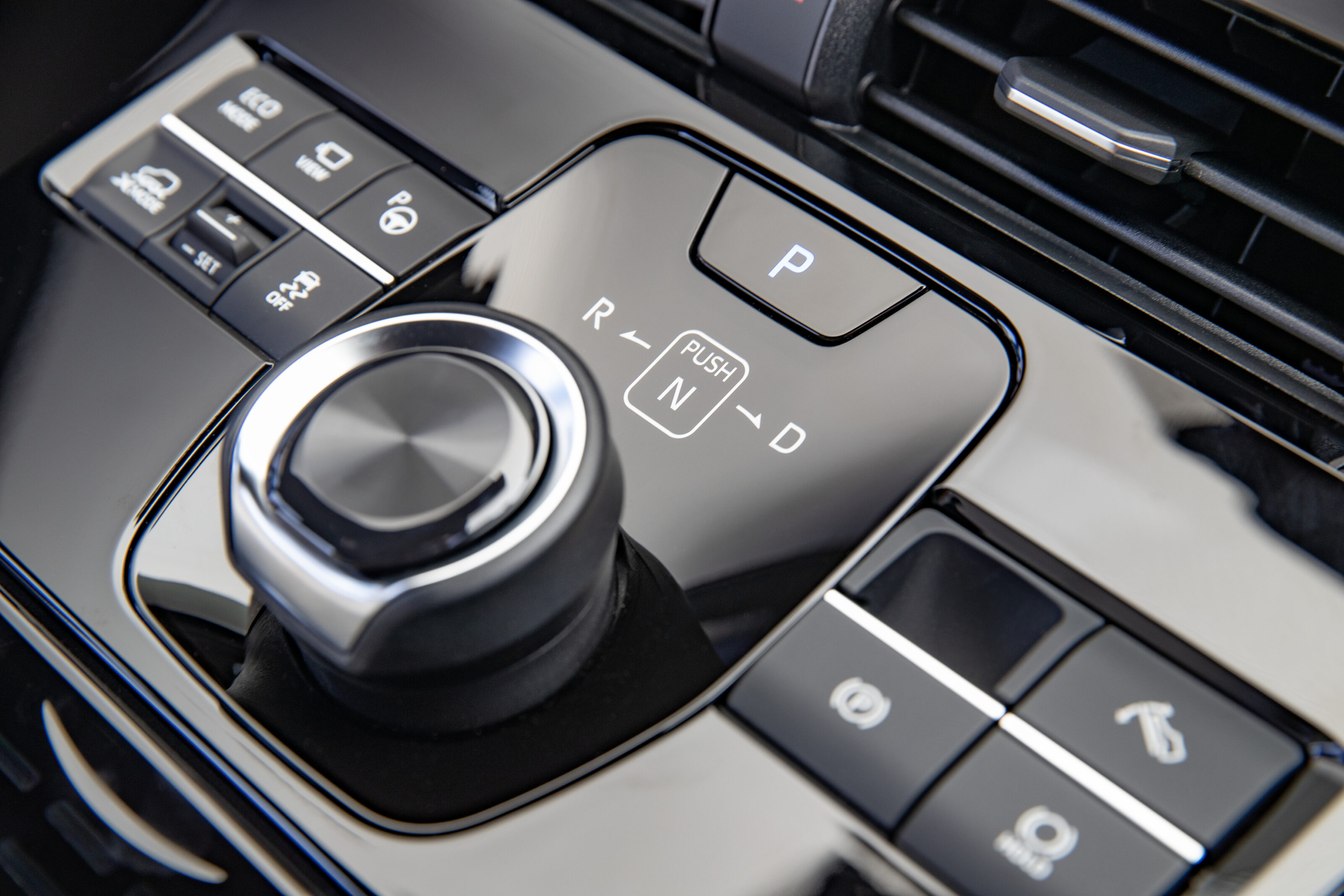
How do rivals compare?
The BZ4x stacks up fairly well on some key figures.
Driving range
For that all-important figure, the BZ4x compares fairly well. That is, without knowing the asking price.
The recently launched Tesla Model Y claims up to 542 kilometres of range, while Nissan’s incoming (we hope) Ariya lists up to 500km.
The popular Hyundai Ioniq 5 boasts 454km in its MY23 updated form, and the Volvo XC40 Recharge Pure Electric claims 418km. When it eventually gets here, Volkswagen’s ID.4 should be good for around 510km.

How big is the Toyota BZ4x compared to its stablemates and rivals?
Size
Overall dimensions for the BZ4X are 4690mm long, 1860mm wide and 1650mm tall (although the quoted number includes the antenna), with a 2850mm wheelbase.
Within the Toyota family, those dimensions are a match for the new Kluger’s wheelbase, despite that large family SUV being 300mm longer overall.
These numbers make the BZ4x markedly shorter than the Tardis-like Hyundai Ioniq 5 – but the BZ4x and Ioniq 5 are similar in that they are smaller overall than each brand’s large family SUV, while boasting similar wheelbases.
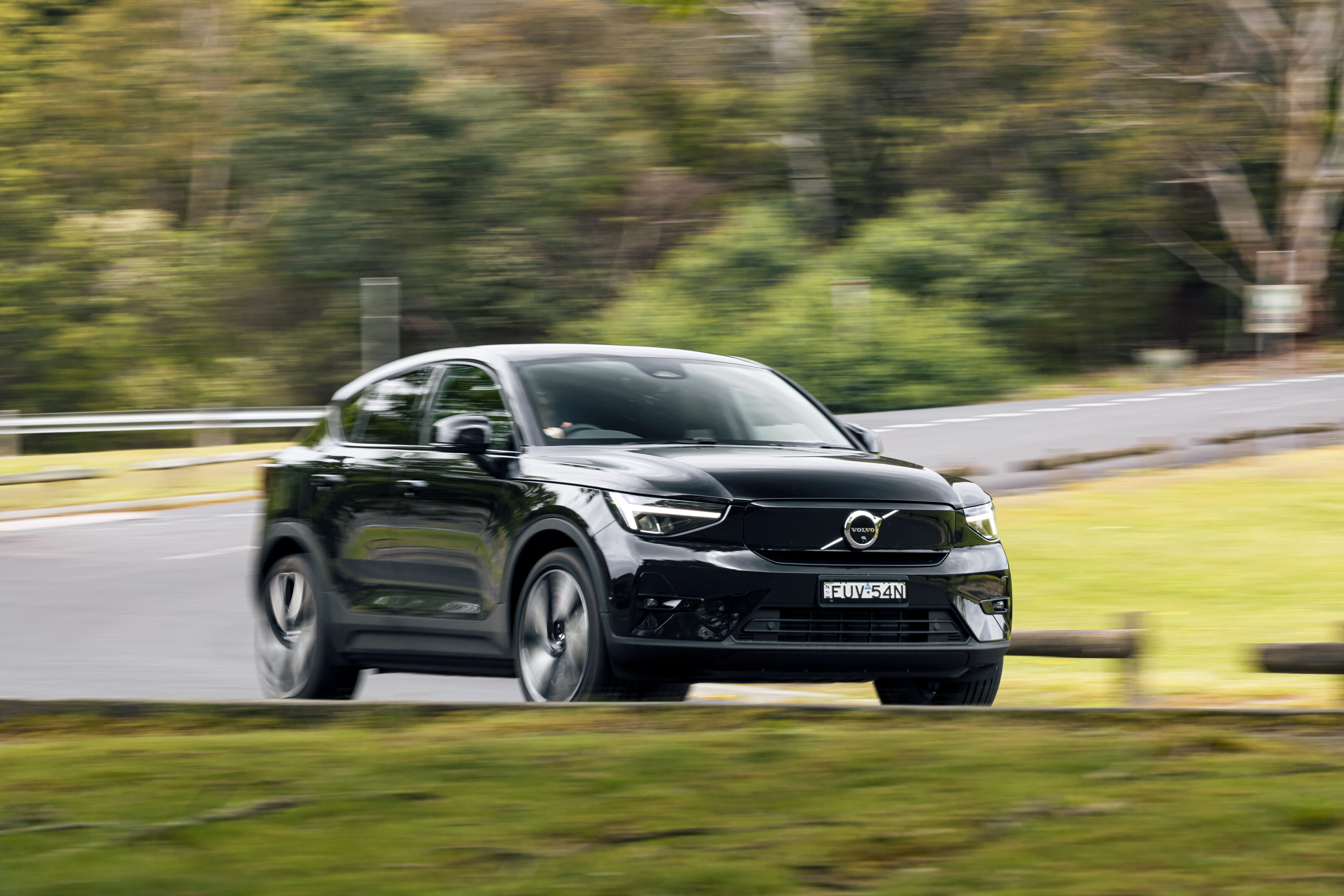
The Ioniq 5’s 3000mm wheelbase is 10mm longer than the footprint of Hyundai’s Palisade, which Wheels recently declared the winner in our Palisade v Kluger v CX-9 face-off.
Below the Kluger, the mid-sized 4570mm RAV4 SUV rides on a 2690mm wheelbase (160mm shorter than BZ4x).
Tesla’s hugely popular newcomer, the Model Y, has a 2890mm wheelbase (40mm longer than BZ4x) and an overall length of 4750mm (60mm longer).
Interior quality, technology and comfort
That brings us to the interior: quite good in so many ways, odd in others.
Quality
There’s no mistaking it – whatever the BZ4x will cost, it’ll bring the nicest interior Toyota has offered here in a long time. Fit and finish is overall of a high standard, while materials are a mix of familiar and unique – whether it be the ‘premium until you touch it’ piano-black surfaces or the almost garment-like open-weave fabric stretched across the upper dash.
Technology
With little time available to explore its infotainment system, for now I can only say that it feels like a marked improvement over Toyota’s regular system. It seems attractive, mostly quick and fairly intuitive – qualities not easily assigned to what Toyota buyers are used to. Android Auto and Apple Carplay are featured, although only the latter is wireless – for now, at least.
The main display of our test car was a large 12.3-inch unit (the industry-standard size for ‘large’), while entry models overseas have an 8.0-inch display. The ‘instrument’ display behind the steering wheel is a relatively small 7.0-inch unit surrounded by acres of glossy black bezel, so a bigger screen might quietly be on the cards for update time.
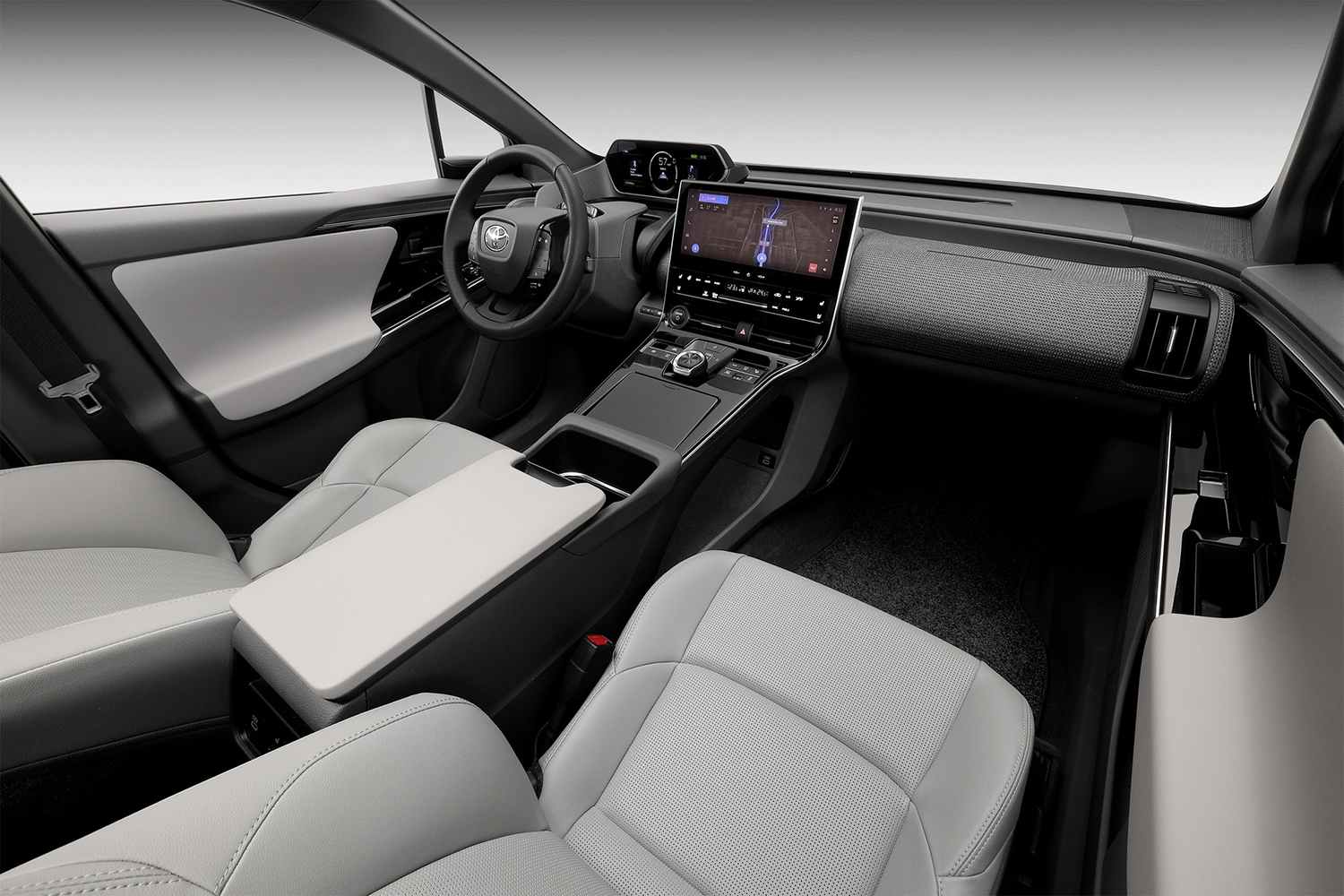
Comfort
The BZ4x’s greatest strength seems to be comfort and room to stretch your legs – at least in the rear. The front seats are firm but supportive with surprisingly large bolstering and good thigh support.
Front space
There isn’t a great deal of room for lateral movement of your legs, however, and the driver’s foot space is a little cramped – but not so much to be a cause for concern. Unless you have clown feet.
Head room is also a little tight. I’m 5’9”, albeit long in the torso, and my hair was brushing against the ceiling – which also accommodated a large dual-pane fixed sunroof.
Rear space
The rear is honestly a treat, with limo-rivalling legroom and good wiggle room for your toes. Space across the second row would be tight for three grownups but perhaps not uncomfortable, and there’s at least a mostly (if not completely) flat floor.
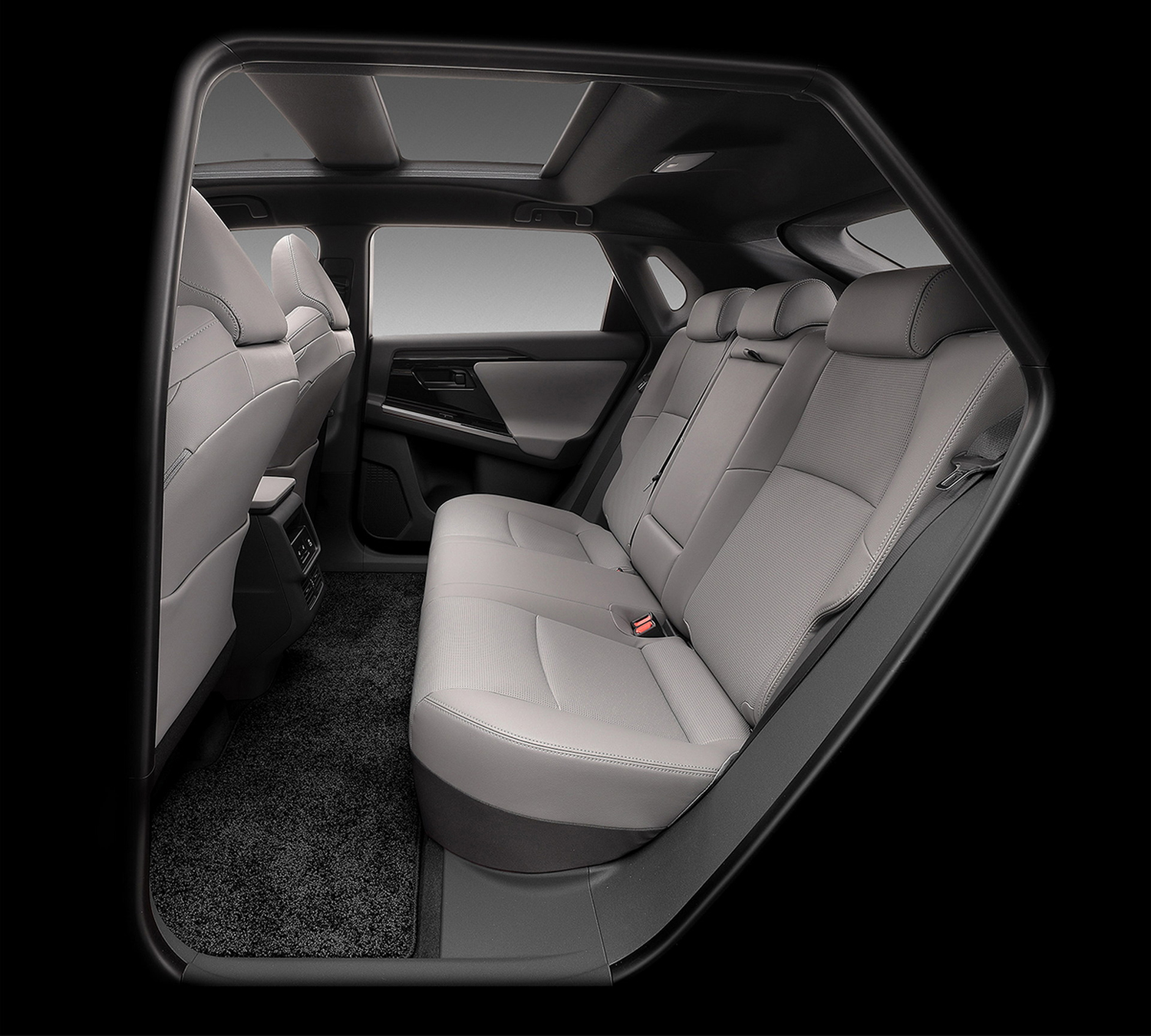
Boot space
The BZ4x has a 412-litre boot, which is well shy of the overall shorter RAV4’s 580 litres – partly explaining where all that legroom in the second row has come from.
Even the much smaller Corolla Cross has a bigger boot, with 425 or 436 litres in petrol form, depending on the model. Only the hybrid has a smaller boot, thanks to its batteries, at 380 litres.
The BZ4x also goes without a spare tyre of any type, just like the AWD hybrid versions of the Corolla Cross. There’s also nothing particularly clever about this EV’s rear storage area, it is merely… there. Likewise, there’s no storage at all in the front.
The Tesla Model Y comes out a clear winner on this front, with a massive 854 litres in the boot, including the large space beneath the floor. It also has a large storage space under the bonnet up front, measuring 117 litres.
Of course, choosing the Toyota over the Tesla will likely offer buyers some peace-of-mind when it comes to reputation for reliability and customer support.
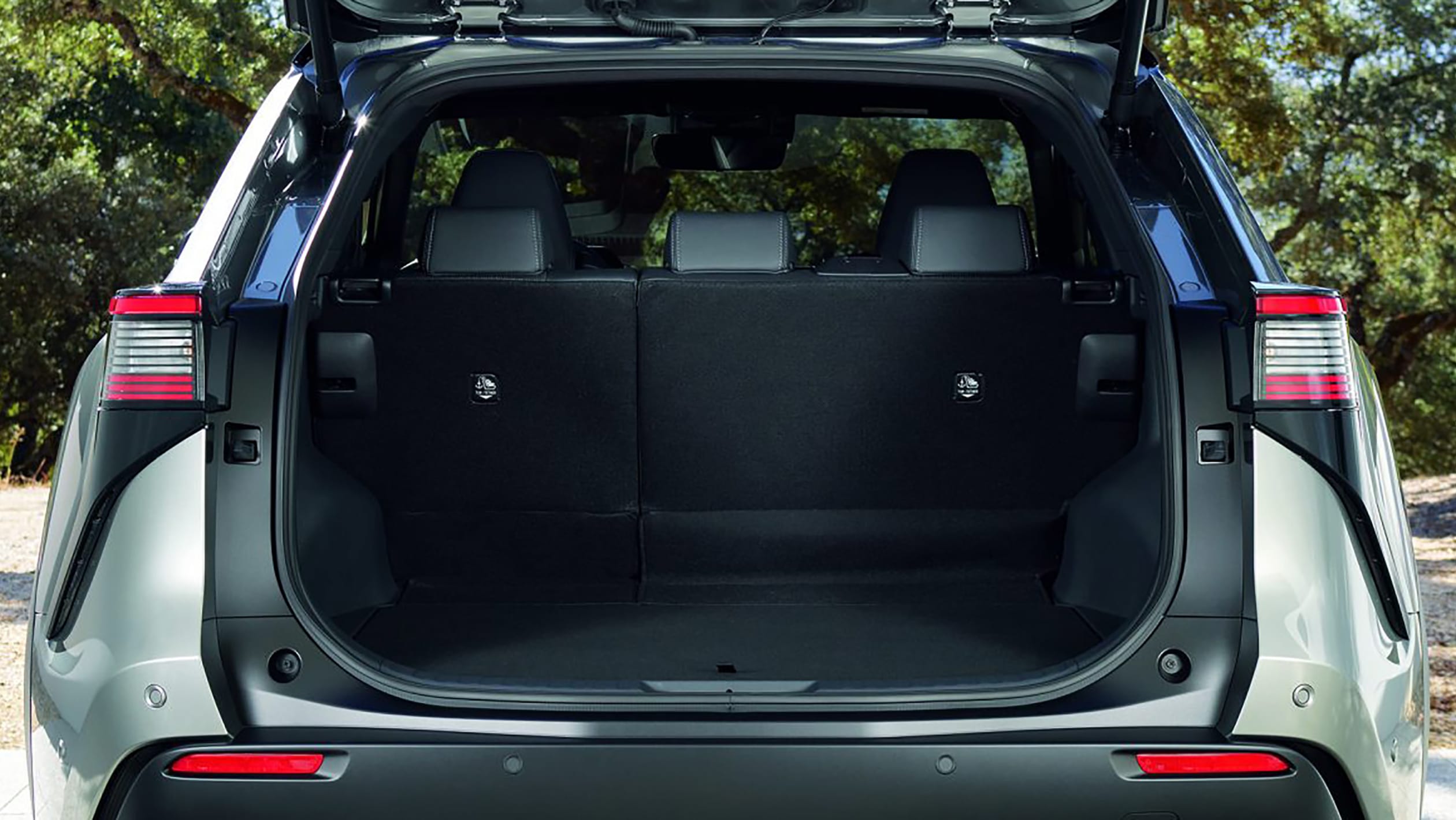
What is it like to drive?
So far, so really quite good.
Three laps of the outer loop at Toyota’s learning and assessment course in Melbourne is what I was afforded in the BZ4x, and while its surface is not in tip-top racing form, it’s smooth and uninterrupted. Those sorts of conditions will flatter any car. (The course does have more challenging sections, as you can see below, but Toyota wasn’t humouring any requests for access…)

Ride quality and comfort on the BZ4x’s 18-inch wheels was therefore quite good, but reports out of Europe suggest we can expect similar on public roads here – although Australia’s roads are, as a rule, of a much poorer quality than in Europe.
Still, what few small bumps and holes I did encounter (indeed I aimed for them) hinted at a firm yet supple design to the BZ4x’s ride that should satisfy Aussies, neatly rounding off the hard edges of the few small craters I could find.
And, unlike Hyundai and Kia with their localised suspension tuning, this could be the setup we’ll see sold here – so it bodes well.

That comfort doesn’t seem to come at any great expense to the car’s cornering, either. In regular long turns at suburban speeds, the BZ4x is inspiring in how flat it sits, while an extra helping of beans didn’t seem to bother it much either. As with most EVs, the BZ4x’s heavy and low-set battery pack helps in this regard.
Wind and road noise is fairly restrained but, again, the absence of engine noise and vibration in an EV will tend to exacerbate the sounds of rubber pounding the road, or wind rushing past and around the door mirrors. Turn the stereo up. ?♂️
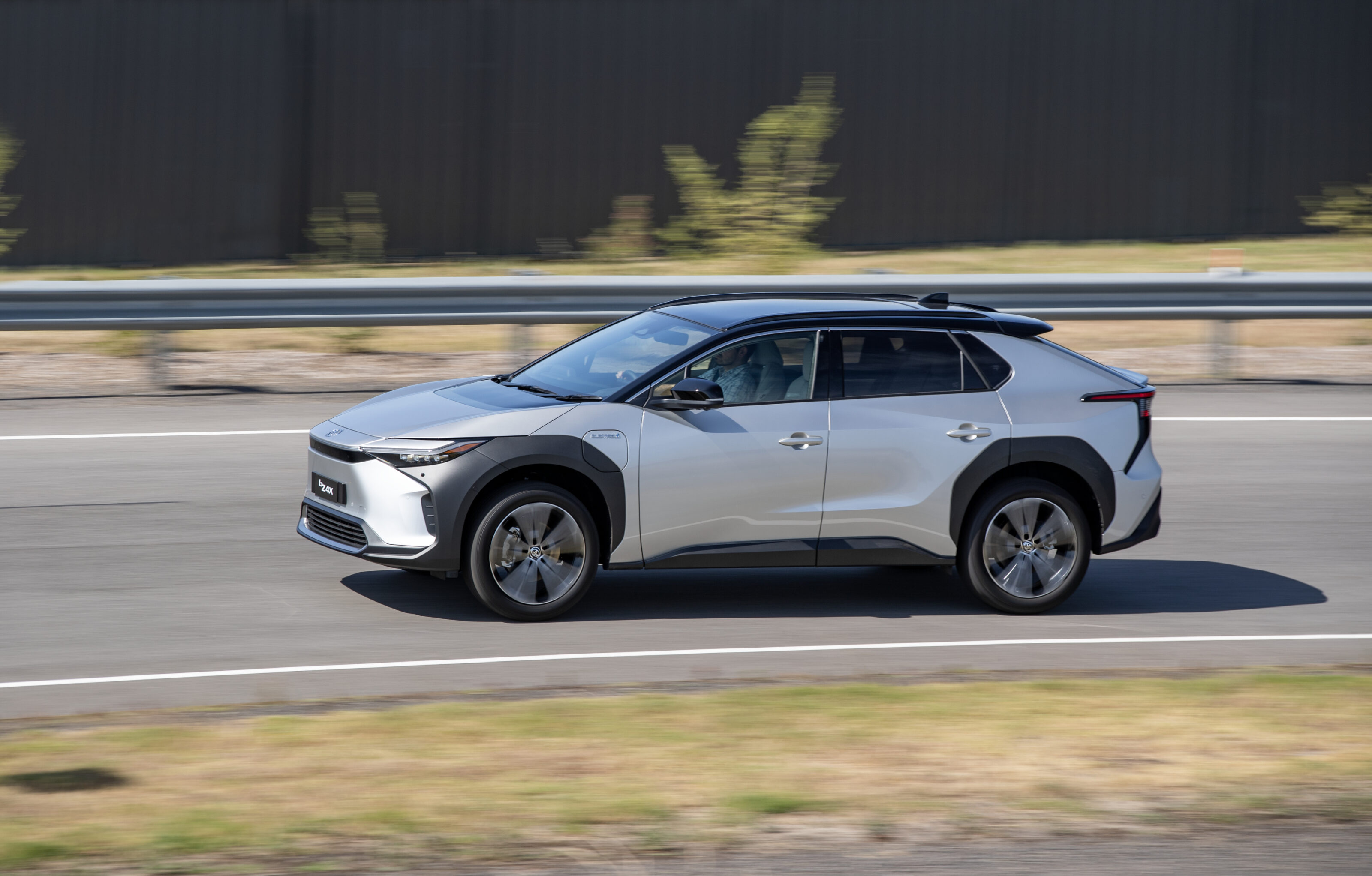
How safe is it?
The BZ4x doesn’t have an ANCAP score yet, but it was awarded a 5-star Euro NCAP rating in 2022.
Expect that to cross over to Australia, although surprises do happen.
BZ4x warranty and running costs
Toyota is offering no details on this just yet, and with zero real precedent in the Toyota range, this is a hard one to speculate on.
At the very least, we’d expect Toyota’s standard five-year warranty to apply, and an eight-year warranty on the battery should also figure, if Toyota wants to be competitive. Toyota’s hybrid batteries have a 10-year warranty, so you might get lucky with more of the same – although the tech is distinctly different.
Although a vastly different car, Toyota’s RAV4 Hybrid has service intervals of every 12 months and 15,000kms, with each visit is capped at $230 for the first five years.
As a point of comparison, our 2022 COTY the EV6 is covered by a seven-year/150,000-kilometre warranty, with seven-year cover for the battery pack. Kia offers three different pre-paid servicing packages to the tune of three, five and seven years. For Kia EV6 Air and GT-Line, these cost $594, 1089 and $1584, respectively.
Tesla has a four-year / 80,000km warranty on its vehicles, but the battery and drive unit are covered to eight years/160,000km in RWD form, or 192,000km for AWD models.

Best Electric Cars, $65k-80k: Australia’s premium EVs tested
In part two of our three price-based EV buying guides, we compare Australia’s electric cars priced between $65,000 and $80,000
VERDICT
All good things…
Whatever the spec we see on sale in Australia, these very brief first impressions suggest it could be worth the wait.
We can’t know until the price and features are revealed later this year, but as a package on its own, the car I drove makes a good first impression.
Its strongest advantage against similarly priced rivals might simply be, like Tesla, that Toyota expects to have a relatively steady supply of BZ4x, and might even be able to keep stock in Australia for quick deliveries.
That alone could see buyers, unable or unwilling to wait for what might be a bigger or more stylish or cheaper rival, conquested by the big T.
Things we like
- Rapid, smooth acceleration (yep, it’s an EV)
- Excellent ride comfort, although driven only on a generously smooth road
- Near-premium interior feels a leap forward for the Toyota brand, but they did cut at least one corner…
- Excellent interior space and a decent boot with a flat loading lip
Not so much
- Price unknown, but Toyota admits it won’t be cheap
- ‘Fast’ DC charging speed limited to 150kW, well short of likely price rivals the Kia EV6 and Hyundai Ioniq 5 (350kW)
- Big centre screen’s wow factor spoiled a little by tiny driver display
- Spacious front row comes partly at the expense of a glovebox
We recommend
-
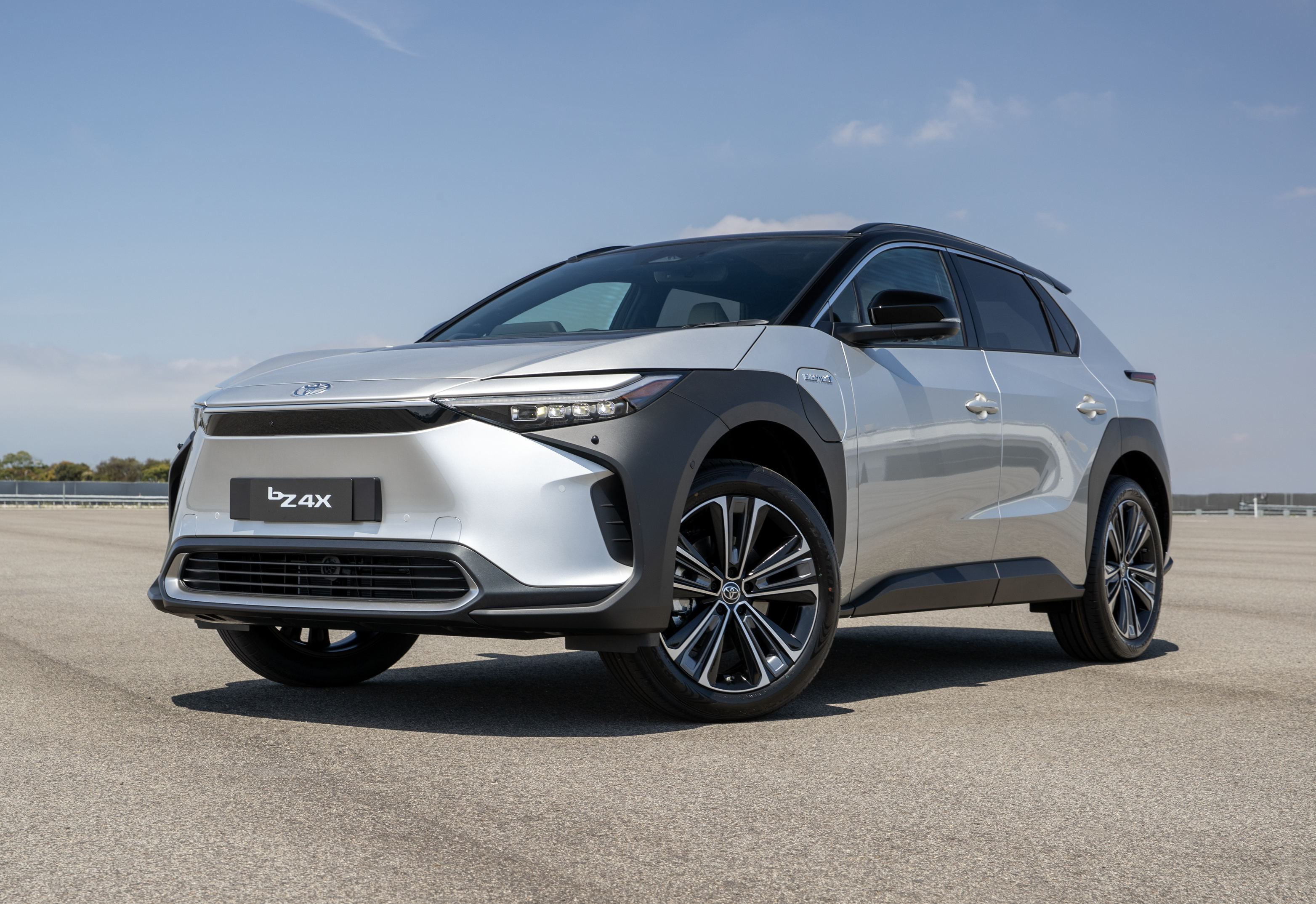 News
News2024 Toyota bZ4X due later this year, first of three EVs confirmed for Australia
Toyota will launch three all-electric vehicles in Australia in the next three years, including the soon-to-launch BZ4x medium SUV – but hybrid is still the main focus
-
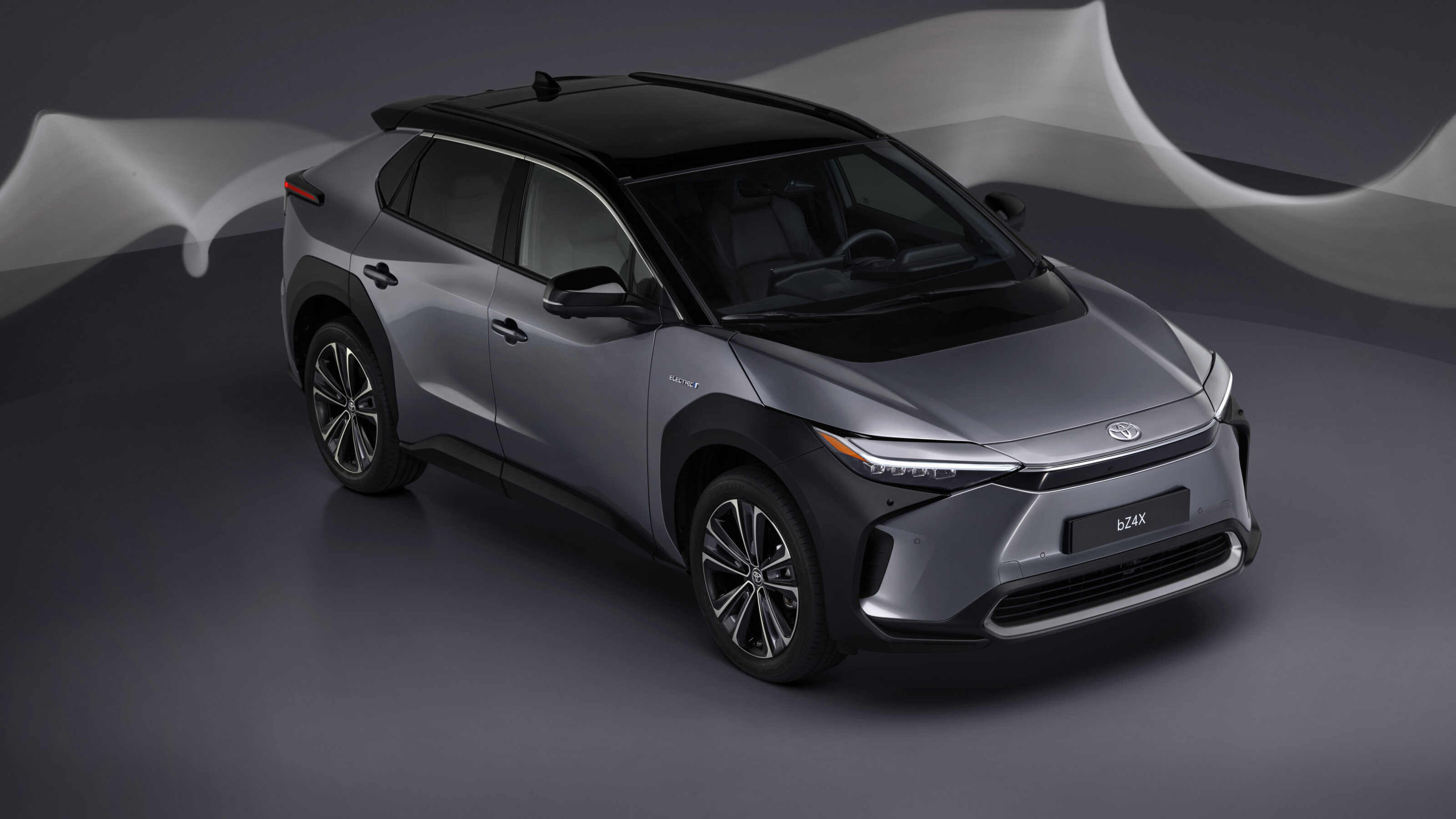 News
NewsToyota remains tight-lipped on initial BZ4x supply, but more will find homes than original Prius
Toyota Australia is gearing up for its first ever battery EV launch with more allocation information to come
-
 News
News2025 New Car Calendar: All the new cars coming to Australia
Take a look at our list of what is expected to launch in Australia in 2025 – plus those we might not see locally just yet


